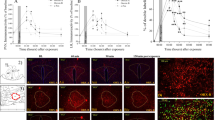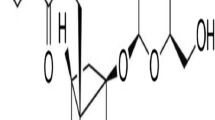Abstract
The predator scent-induced (PSI) stress model is a rat model used to mimic post-traumatic stress disorder (PTSD) symptoms in humans. There is growing evidence that prazosin, which blocks α-1 and is approved by the FDA as an anti-hypertensive drug, can potentially be of use in the treatment of PTSD-related sleep disorders. The aim of this study was to investigate the role of prazosin treatment on behavioral parameters (freezing time, total transitions, and rearing frequency measured from the open field; anxiety index, total entries and time spent in open arms calculated from the elevated plus maze), apoptotic proteins and α-2c-AR in fear memory reconsolidation in the PSI stress rat model. We used western blot analysis to determine the effect of prazosin (0.5 mg/kg/ip) on α-2c-AR and apoptotic protein expression changes in the frontal cortex, hippocampus, and amygdala. It was determined that in the stress group, there was increased freezing time and anxiety index, and decreased rearing frequency, total transitions, total entries, and time spent in open arms compared to the control groups. Following PSI-stress, pro-apoptotic (bax) protein expression levels increased and α-2c AR and anti-apoptotic protein (bcl-2) levels decreased in investigated all brain regions. The majority of stress-induced changes were recovered with prazosin treatment. The results of our study may potentially be useful in understanding the effect of prazosin treatment, given the fact that the amygdala, frontal cortex, and hippocampus regions are affected for stress conditions.






Similar content being viewed by others
References
Adamec R, Bartoszyk GD, Burton P (2004) Effects of systemic injections of vilazodone, a selective serotonin reuptake inhibitor and serotonin 1A receptor agonist, on anxiety induced by predator stress in rats. Eur J Pharmacol 504:65–77
Arnsten AFT, Raskind MA, Taylor FB, Connor DF (2015) The effects of stress exposure on prefrontal cortex: translating basic research into successful treatments for post-traumatic stress disorder. Neurobiol Stress 1:89–99
Aykac A, Aydın B, Cabadak H, Gören MZ (2012) The change in muscarinic receptor subtypes in different brain regions of rats treated with fluoxetine or propranolol in a post-traumatic stress disorder model. Behav Brain Res 232:124–129
Aykac A, Karanlik B (2017) The expression level of muscarinic M1 receptor subtypes in different regions of rat brain. Mar Med J 30:1–7
Aykaç A, Gören MZ, Cabadak H (2015) Altered ratio of proapoptotic and antiapoptotic proteins in different brain regions of female rats in a model of post-traumatic stress disorder. Turk J Biochem 40:1–7
Bernardi RE, Lattal KM (2010) A role for alpha-adrenergic receptors in extinction of conditioned fear and cocaine conditioned place preference. Behav Neurosci 124:204–210
Bremner JD (2007) Functional neuroimaging in post-traumatic stress disorder. Expert Rev Neurother 7:393–405
Brennan PA, Keverne EB (1997) Neural mechanisms of mammalian olfactory learning. Prog Neurobiol 51:457–481
Carli M, Prontera C, Samanin R (1989) Effect of 5-HT1A agonists on stress induced deficit in open field locomotor activity of rats: evidence that this model identifies anxiolytic-like activity. Neuropharmacology 28:471–476
Cohen H, Matar MA, Zohar J (2013) Animal models of post-traumatic stress. 2013. Preclinical models of neurologic and psychiatric disorders. Curr Proto Neurosci 9:1–18
Cohen H, Matar MA, Richter-Levin G, Zohar J (2007) The contribution of an animal model toward uncovering biological risk factors for PTSD. Ann NY Acad Sci 1071:335–350
Daskalakis NP, Yehuda R (2014) Principles for developing animal models of military PTSD. Eur J Psychotraumatol 5:23825
Ding J, Han F, Shi Y (2010) Single-prolonged stress induces apoptosis in the amygdala in a rat model of post-traumatic stress disorder. J Psychiatr Res 44:48–55
Do-Monte FH, Allensworth M, Carobrez AP (2010) Impairment of contextual conditioned fear extinction after microinjection of alpha-1-adrenergic blocker prazosin into the medial prefrontal cortex. Behav Brain Res 211:89–95
Elzinga BM, Bremner JD (2002) Are the neural substrates of memory the final common pathway in posttraumatic stress disorder (PTSD)? J Affect Disord 70:1–17
Girgenti MJ, Hare BD, Ghosal S, Duman RS (2017) Molecular and cellular effects of traumatic stress: implications for PTSD. Curr Psychiatry Rep 19:85
Hayasaka Y, Purgato M, Magni LR, Ogawa Y, Takeshima N, Cipriani A, Barbui C, Leucht S, Furukawa TA (2015) Dose equivalents of antidepressants: evidence-based recommendations from randomized controlled trials. J Affect Disord. 180:179–184
Hoskins M, Pearce J, Bethell A, Dankova L, Barbui C, Tol WA, van Ommeren M, de Jong J, Seedat S, Chen H, Bisson JI (2015) Pharmacotherapy for post-traumatic stress disorder: systematic review and meta-analysis. Br J Psychiatry 206:93–100
Jia Y, Han Y, Wang X, Han F (2018) Role of apoptosis in the post-traumatic stress disorder model-single prolonged stressed rats. Psychoneuroendocrinology 95:7–105
Kirkwood CK, Makela EH, and Wells BG (2008) Anxiety disorders II: posttraumatic stress disorder and obsessive-compulsive disorder. In: Di Piro J, Talbert R, Yee G, et al (ed) Pharmacotherapy, a pathophysiologic approach. 7th edn. New York, NY: Mc Graw-Hill Companies, Inc., pp 1179–1184
Kroon JA, Carobrez AP (2009) Olfactory fear conditioning paradigm in rats: effects of midazolam, propranolol or scopolamine. Neurobiol Learn Mem 91:32–40
Le Dorze C, Gisquet-Verrier P (2016) Sensitivity to trauma-associated cues is restricted to vulnerable traumatized rats and reinstated after extinction by yohimbine. Behav Brain Res 313:120–134
Lowry OH, Rosebrough NJ, Far AL, Randall RJ (1951) Protein measurement with the Folin phenol reagent. J Biol Chem 193:265–327
Manion ST, Gamble EH, Li H (2007) Prazosin administrated prior to inescapable stressor blocks subsequent exaggeration of acoustic startle response in rats. Pharmacol Biochem Behav 86:559–565
Manoli I, Alesci S, Blackman MR, Su YA, Rennert OM, Chrousos GP (2007) Mitochondria as key components of the stress response. Trends Endocrinol Metab 8:190–198
Matar MA, Cohen H, Kaplan Z, Zohar J (2006) The effect of early post-stressor intervention with sertraline on behavioral responses in an animal model of posttraumatic stress disorder. Neuropsychopharmacol 31:2610–2618
Mazor A, Matar MA, Kaplan Z, Kozlovsky N, Zohar J, Kohen H (2009) Gender related qualitative differences in baseline and post-stress anxiety responses are not reflected in the incidence of criterion-based PTSD-like behavior patterns. World J Biol Psychiatry 10:856–869
Miller LJ (2008) Prazosin for the treatment of posttraumatic stress disorder sleep disturbances. Pharmacotherapy 28:656–666
Montea FH, Souza RR, Wong TT, Carobrez AP (2013) Systemic or intra-prelimbic cortex infusion of prazosin impairs fear memory reconsolidation. Behav Brain Res 244:137–141
Otto T, Cousens G, Herzog C (2010) Behavioral and neuropsychological foundations of olfactory fear conditioning. Behav Brain Res 110:119–128
Pandaranandaka J, Poonyachoti S, Kalandakanond-Thongsong S (2006) Anxiolytic property of estrogen related to the changes of the monoamine levels in various brain regions of ovariectomized rats. Physiol Behav 87:828–835
Paxinos G, Watson C (1986) The rat brain in stereotaxic coordinates, 2nd edn. Academic Press, London
Pellow S, Chopin P, File SE, Briley M (1985) Validation of open-closed arm entries in an elevated plus maze as measure of anxiety in the rat. J Neurosci Methods 14:149–167
Prut L, Belzung C (2003) The open field as a paradigm to measure the effects of drugs on anxiety-like behaviors: a review. Eur J Pharmacol 463:3–33
Rasmussen DD, Kincaid CL, Froehlich JC (2017) Prazosin prevents increased anxiety behavior that occurs in response to stress during alcohol deprivations. Alcohol Alcohol 52:5–11
Rogoz Z, Kabzinski M, Sadaj W, Rachwalska P, Gądek-Michalska A (2012) Effect of cotreatment with fluoxetine or mirtazapine and risperidone on the active behaviors and plasma corticosterone concentration in rats subjected to the forced swim test. Pharmacol Rep 64:1391–1399
Sallinen J, Haapalinna A, Viitamaa T, Kobilka BK, Scheinin M (1998) Adrenergic alpha2C-receptors modulate the acoustic startle reflex, prepulse inhibition, and aggression in mice. J Neurosci 18:3035–3042
Schoenfeld TJ, Rhee D, Martin L, Smith S, Sonti A, Padmanaban VS (2019) New neurons restore structural and behavioural abnormalities in a rat model of PTSD. Hippocampus 29:848–861
Shallcross J, Hámor P, Bechard AR, Romano M, Knackstedt L, and Schwendt M (2019) The divergent effects of CDPPB and Cannabidiol on fear extinction and anxiety in a predator scent stress model of PTSD in rats. Front Behav Neurosci 10:13:91
Skelly MJ, Chappell AE, Carter E, Weiner JL (2015) Adolescent social isolation increases anxiety-like behavior and ethanol intake and impairs fear extinction in adulthood: possible role of disrupted noradrenergic signaling. Neuropharmacol 97:149e159
Steven M, Hudson SM, Whiteside TE, Lorenz RA, Wargo KA (2012) Prazosin for the treatment of nightmares related to posttraumatic stress disorder: a review of the literature. Prime Care Companion. CNS Disord 14:PCC.11r01222
Stone EA, Quartermain D, Lin Y, Lehmann ML (2007) Central a1-adrenergic system in behavioral activity and depression. Biochem Pharmacol 73:1063–1075
Takamura N, Masuda T, Inoue T, Nakagawa S, Koyama T (2012) The effects of the co-administration of the α1-adrenoreceptor antagonist prazosin on the anxiolytic effect of citalopram in conditioned fear stress in the rat. Prog Neuro-Psychopharmacol Biol Psychiatry 39:107–111
Taylor HR, Freeman MK, Cates ME (2008) Prazosin for treatment of nightmares related to posttraumatic stress disorder. Am J Health Syst Pharm 65:716–722
Terzioğlu B, Kaleli M, Aydın B, Ketenci S, Cabadak H, Gören MZ (2013) Increased noradrenaline levels in the rostral pons can be reversed by M1 antagonist in a rat model of post-traumatic stress disorder. Neurochem Res 38:1726–1733
Van Liempt S, Vermetten E, Geuze E, Westenberg HG (2006) Pharmacotherapy for disordered sleep in post-traumatic stress disorder: a systematic review. Int Clin Psychopharmacol 21:193–202
Wang L, Han D, Yin P, Teng K, Jianqin-Xu J, and Ma Y (2019) Decreased tryptophan hydroxylase 2 mRNA and protein expression, decreased brain serotonin concentrations, and anxiety-like behavioral changes in a rat model of simulated transport stress. Stress 1–11
Xiao B, Yu B, Wang HT, Han F, Shi YX (2011) Single-prolonged stress induces apoptosis by activating cytochrome C/caspase-9 pathway in a rat model of post-traumatic stress disorder. Cell Mol Neurobiol 31:37–43
Yehuda R, Giller EL, Southwick SM, Lowy MT, Mason JW (1991) Hypothalamic- pituitary-adrenal dysfunction in posttraumatic stress disorder. Biol Psychiatry 30:1031–1048
Zhang L, Zhou R, Li X, Ursano RJ, Li H (2006) Stress-induced change of mitochondria membrane potential regulated by genomic and non-genomic GR signaling: a possible mechanism for hippocampus atrophy in PTSD. Med Hypotheses 66:1205–1208
Zoladz PR, Fleshner M, Diamond DM (2013) Differential effectiveness of tianeptine, clonidine and amitriptyline in blocking traumatic memory expression, anxiety and hypertension in an animal model of PTSD. Prog Neuro-Psychopharmacol Biol Psychiatry 44:1–16
Acknowledgements
This work was supported by the Experimental Health Sciences Research Centre, Near East University, Cyprus under Grant number SAG-2017-1-011.
Author information
Authors and Affiliations
Corresponding author
Ethics declarations
Conflict of Interest
The authors report no conflicts of interest.
Additional information
Publisher’s Note
Springer Nature remains neutral with regard to jurisdictional claims in published maps and institutional affiliations.
Rights and permissions
About this article
Cite this article
Aykac, A., Şehirli, A.Ö. & Gören, M.Z. Evaluation of the Effect of Prazosin Treatment on α-2c Adrenoceptor and Apoptosis Protein Levels in the Predator Scent-Induced Rat Model of Post-Traumatic Stress Disorder. J Mol Neurosci 70, 1120–1129 (2020). https://doi.org/10.1007/s12031-020-01518-7
Received:
Accepted:
Published:
Issue Date:
DOI: https://doi.org/10.1007/s12031-020-01518-7




